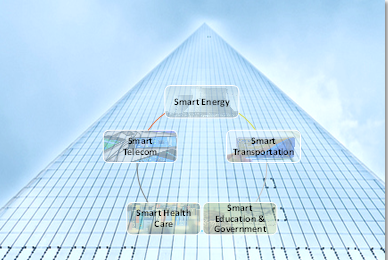The results are in, and we know that advances in communications technology can, and have already had a positive effect on the quality and efficiency of public services. That said, have you ever wondered how your state is making use of the advantages enabled by technology? Well, we did too. So, to answer the question AngelouEconomics recently completed an assessment of the use of “smart” technologies in the US across all 50 states. We looked at 5 broad categories; Energy, Transportation, Education and Government, Health Care and Telecom and gathered data on 41 metrics related to those categories. We normalized the data to create a relative scale, then ranked the states from 1 to 50 in each category, and overall. The results were a little surprising.
Now, at this point, you might be wondering what “smart” technologies are, and you might be surprised to learn that they already surround you in almost everything you see, touch and otherwise interact with. Those technologies are in your smart phone when it gives you directions from your “current location” to a desired destination, when you get your electric bill but never see a meter reader, when medical lab results automatically post to your health records, or when you adjust your home thermostat and lighting from your cell phone. Smart technologies not only enable numerous conveniences but they are rapidly becoming an indispensable part of the effective and efficient management of vital services. These capabilities, which we hope are leading us to a better future, are possible because of advances in the ability of machines to talk to one another machine to machine (m2m), and the proliferation of high-speed data communication networks across the world. At this point, the ultimate application of these technologies is only limited by imagination … and propelled by necessity in a world of seemingly limitless demand but finite supply.
So, how did the states rank?
What we learned from our analysis is that given the broad range of applications, the states that did the best job of prioritizing services for their citizens and worked steadily to provide them scored highest. They set out to be good at as much as possible, not necessarily the best at anything. Superior performance was widespread with 15 states placing in the top five in at least one category. No state dominated all categories but the top states provided some interesting and in some cases counter-intuitive, benchmarks.
- Maine leads the nation in the use of smart electric meters capable of 2-way communication with 56% of clients using these systems.
- New York and Rhode Island have the lowest energy consumption per capita, using 80% less energy overall than the highest demand state.
- New Jersey was, by far, the largest producer of solar power, when the amount of sunlight available for energy production was taken into account.
- Massachusetts’s transportation related death rate was the lowest in the nation with 76% fewer deaths per capita than the worst performing state.
- Oregon leads the nation in percent of its economy derived from the tech industry and the number of residents wired for gigabit internet.
What does per capita energy consumption, the use of renewable energy sources, or traffic-related death rates have to do with the use of smart technologies, you ask? Well, while not always obvious, a great deal. Understanding demand is an important part of efficient supply, producing energy close to the consumer from renewable sources reduces pressure on the grid and gives the consumer direct control over their energy profile. Traffic deaths, while tragic, are a gauge on the efficiency and condition of mass transit and transportation infrastructure. The capability to monitor and moderate energy demand, democratize energy supply, and the efficient and safe transport of people, goods and services are all made possible by the use of smart technology and the ability of machines to communicate critical pieces of information to one another and to the systems that manage them.
What was clear from the Smart States Study is that all states have left room for improvement and that no state is perfect, but there has been some amazing progress made in bringing modern technology and innovations to American communities nationwide. The progress made thus far, however, pales in comparison to the work yet to be done. Whether ranked 1st or 50th overall, every state has significant shortcomings to improve on and challenges to overcome if America is to meet its full potential in the 21st century.
If you would like to learn more about how your state or industry is using smart technology to improve the quality and efficiency of services, please drop us a note at http://info.angeloueconomics.com/smartstates. We’d be happy to get back to you.

